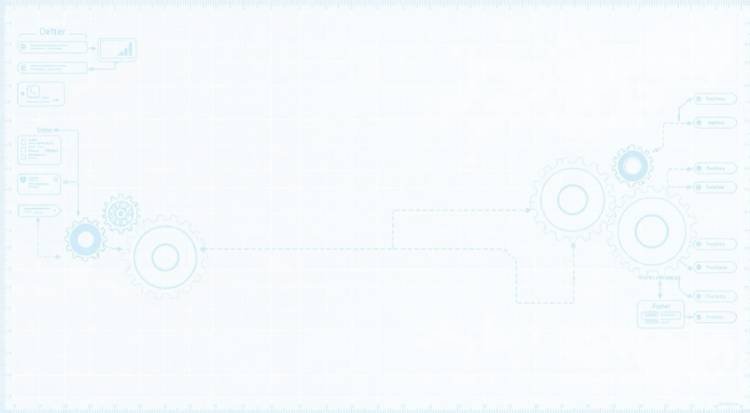When you really get down to it, understanding the Software Development Life Cycle (SDLC) makes projects so much easier to manage. It’s like having a map for a road trip; you know where you’re going and how you’ll get there. Following the key software development life cycle steps, as outlined by resources like Emergent Software, helps ensure teams stay organized and aligned throughout the process. This structured approach brings a level of clarity that’s hard to achieve otherwise.
Improved Planning and Resource Allocation
Getting the planning right from the start is a big deal. The SDLC helps break down a massive project into smaller, manageable chunks. This means you can actually figure out what resources you need – people, tools, time – and assign them properly. Without this, you’re just guessing, and that usually leads to problems down the line. Good planning prevents a lot of headaches later on.
Structured Approach to Requirements Gathering
Figuring out exactly what the software needs to do is a critical step. The SDLC provides a framework for this, making sure you talk to the right people and document everything clearly. This structured approach to requirements gathering means fewer misunderstandings and a better chance of building what the user actually wants. It’s all about getting the details right early.
Clear Milestones and Progress Tracking
Projects can feel overwhelming if you can’t see how you’re doing. The SDLC builds in milestones, which are like checkpoints. You can see what’s been completed and what’s next. This makes it easier to track progress, identify any delays, and keep everyone informed. Knowing where you stand is key to staying on track and maintaining control over the project.
Ensuring Superior Software Quality
Rigorous Testing and Quality Assurance
Building good software means making sure it works right. This involves a lot of testing. We’re talking about checking every little part to find bugs before users do. This isn’t just about finding errors; it’s about making sure the software does what it’s supposed to do, every single time.
Think of it like this: you wouldn’t buy a car without checking the brakes, right? Software needs the same kind of attention. The Software Development Life Cycle (SDLC) puts testing right into the process, not as an afterthought. This structured testing helps catch problems early, saving a lot of headaches later on. It’s a key part of making sure the final product is solid.
- Thorough testing is non-negotiable for quality. We need to test everything from small functions to how the whole system works together. This includes different types of tests like unit tests, integration tests, and user acceptance tests. The goal is always to deliver reliable software.
Defect Prevention Through Design
It’s better to stop problems before they start. This means thinking about potential issues during the design phase. If we plan carefully and consider how different parts of the software will interact, we can avoid many common mistakes. Good design is the first line of defense against bugs.
This approach means that the team spends time thinking about the architecture and how data will flow. They consider potential failure points and build in ways to avoid them. This proactive stance is a big part of what makes the Software Development Life Cycle (SDLC) so effective for quality. It’s about building it right the first time.
Preventing defects during the design phase saves significant time and resources compared to fixing them later.
Meeting Technical and User Requirements
Software has to work on a technical level, but it also has to be useful for the people who will use it. The SDLC helps make sure both of these things happen. We start by clearly writing down what the software needs to do, both for the computers and for the people. Then, we check at each step to see if we’re still on track.
This means we don’t just build something that runs; we build something that solves a problem for the user. By keeping both the technical specifications and the user’s needs in focus throughout the development process, we can create software that is both functional and valuable. This dual focus is central to achieving superior software quality.
- Clearly defined requirements.
- Regular checks against these requirements.
- User feedback incorporated early and often.
Facilitating Seamless Team Collaboration
When everyone knows their part and how it fits, projects just run smoother. This is where understanding the Software Development Life Cycle (SDLC) really shines for team collaboration.
Defined Roles and Responsibilities
Clear roles mean less confusion. Everyone knows who’s doing what, from the initial idea to the final launch. This structure helps prevent tasks from falling through the cracks. When roles are well-defined within the SDLC, team members can focus on their specific contributions, leading to more efficient work.
Centralized Documentation for Consistency
Having all project information in one place is a game-changer. This means everyone is working from the same playbook, reducing errors and misunderstandings. Centralized documentation, a key part of a good SDLC, keeps everyone aligned and informed.
A single source of truth for project details prevents conflicting information and keeps the team moving forward together.
Open Communication Channels
Making sure information flows freely between team members is vital. This means project managers, developers, testers, and designers can all talk to each other easily. Open communication, a core principle in SDLC, helps solve problems faster and keeps the project on track. It’s about making sure everyone feels heard and informed throughout the entire process.
Mitigating Risks and Managing Change

Projects rarely go exactly as planned. That’s where understanding the Software Development Life Cycle (SDLC) really helps. It gives us a framework to spot problems early and deal with them before they blow up. Think of it as having a map and a toolkit for the development journey. This structured approach helps us manage risks and adapt when things inevitably change.
Iterative Risk Management Strategies
Risk management isn’t a one-time thing; it’s ongoing. The SDLC breaks down a project into stages, making it easier to identify potential issues early on. During the requirements and design phases, we can spot things like unclear needs or technical hurdles. By addressing these upfront, we avoid bigger headaches later. We continuously monitor for risks throughout the project, like coding errors or integration snags, and deal with them as they pop up. This iterative process means we’re always aware and ready to act.
Structured Change Management Processes
Changes happen. Requirements shift, new ideas emerge, or unexpected problems arise. A good SDLC includes structured change management processes to handle this. When a change is proposed, we look at how it affects the timeline, budget, and overall quality. This analysis helps us make smart decisions about whether to accept the change and how to implement it without derailing the project. This structured way of handling changes is key to mitigating risks.
Adapting to Evolving Requirements
Software development is dynamic. What users need today might be different tomorrow. The SDLC allows for flexibility. We can build in checkpoints to review and adjust requirements as we go. This means the final product is more likely to meet current needs, not just the ones we started with. Being able to adapt to evolving requirements is a major strength of using an SDLC. It keeps the project relevant and valuable.
Achieving Cost Efficiency and Predictability
Minimizing Rework and Redundancies
Sticking to a defined Software Development Life Cycle (SDLC) really helps keep costs down. When you have clear steps, like figuring out exactly what the software needs to do before you even start coding, you cut down on mistakes. This means less time spent fixing things later, which is always more expensive. Think of it like building a house; you wouldn’t start hammering nails without a blueprint, right? The SDLC provides that blueprint for software, preventing costly errors that pop up when you build without a solid plan. This structured approach is key to cost efficiency.
A well-defined SDLC minimizes rework by ensuring requirements are thoroughly understood and documented upfront. This clarity prevents misunderstandings that often lead to building the wrong features or functionalities. By catching these issues early, teams avoid the significant expense and time drain associated with redoing work. This proactive stance directly contributes to a more predictable budget and overall project cost.
Optimizing Resource Allocation
Knowing what needs to be done and when allows for smarter use of your team’s time and skills. The SDLC breaks down a big project into smaller, manageable phases. This makes it easier to see who is needed for what and when, so you’re not paying people to sit around or scrambling to find someone at the last minute. Proper resource allocation means the right people are on the right tasks at the right times, making the whole development process run smoother and more predictably. It’s about making sure every hour spent is productive.
- Planning: Assigning tasks based on phase requirements.
- Execution: Matching skills to specific development needs.
- Review: Allocating time for testing and feedback.
This careful planning helps prevent bottlenecks and ensures that the project moves forward efficiently, contributing to overall cost efficiency.
Preventing Costly Late-Stage Fixes
One of the biggest budget killers in software development is finding major problems late in the game. The SDLC, with its built-in testing and review stages, is designed to catch issues early. By thoroughly testing at each phase, from design to implementation, you identify and fix bugs when they are small and relatively inexpensive to resolve. Waiting until the software is almost finished to find out something fundamental is wrong can lead to massive delays and budget overruns. The SDLC’s emphasis on early detection is a direct strategy for preventing these costly late-stage fixes and maintaining project predictability.
Driving Continuous Improvement and Innovation
Incorporating Feedback Loops
Making software better is a constant job. The Software Development Life Cycle (SDLC) helps with this by building in ways to get feedback and make changes as you go. Think of it like this: after you finish a part, you show it to people, see what they think, and then fix it up based on their ideas. This cycle of building, showing, and fixing is key to making sure the final product is actually what people want and need. It’s not just about finishing the project; it’s about making it the best it can be.
Learning from Past Projects
Every project, good or bad, is a chance to learn. The SDLC encourages teams to look back at what they’ve done. Did a certain part take too long? Were there a lot of bugs in one area? By reviewing past projects, teams can spot patterns and figure out how to do things better next time. This means writing down what worked and what didn’t, so the next project can start off smarter. This kind of learning is how companies get better at making software over time.
Iterative Development for Refinement
Instead of trying to get everything perfect in one go, the SDLC often uses an iterative approach. This means building the software in small, manageable pieces. Each piece is developed, tested, and then improved upon. This way, you’re constantly refining the product. It’s like sculpting; you start with a rough shape and gradually add detail. This method helps catch problems early and allows for adjustments based on new information, making the whole process more flexible and leading to a more polished final product. The SDLC makes this iterative development structured and predictable.
Maintaining Project Continuity and Knowledge Transfer

Detailed Project Documentation
Keeping good records is a big deal for keeping projects moving forward. When you have clear, detailed documentation for every step of the software development life cycle (SDLC), it’s like having a roadmap for everyone involved. This means new people joining the team can get up to speed fast. It also helps when you need to go back and fix something or add a new feature later on. Good documentation is key to making sure the project doesn’t just stop when one person leaves.
Think of it like this: if you’re building a complex machine, you wouldn’t throw away the blueprints after the first assembly, right? The same applies to software. Documenting decisions, code structure, and testing procedures provides a solid foundation. This practice helps maintain continuity, especially when team members change or when the project enters a new phase. The SDLC provides a framework for this, making sure that information isn’t lost in the shuffle.
Without proper documentation, projects can easily stall, leading to wasted time and resources. It’s a simple truth that detailed records prevent knowledge from walking out the door with departing employees. This is why the SDLC emphasizes documentation at every stage, from initial requirements to final deployment and maintenance.
Bringing It All Together: The SDLC as a Foundation for Success
So, we’ve talked a lot about the Software Development Life Cycle, or SDLC. It’s not just some fancy term; it’s really the roadmap that helps teams build software that works well. By breaking down the whole process into clear steps, like figuring out what’s needed, designing it, building it, and then testing it thoroughly, teams can stay organized. This structure helps prevent common problems like missed deadlines or going over budget. Plus, having defined stages means everyone knows their part, which makes communication smoother and keeps things on track. Ultimately, using an SDLC means less wasted time, fewer mistakes, and a better final product that users will actually like. It’s a solid way to make sure your software projects don’t just get done, but get done right.
